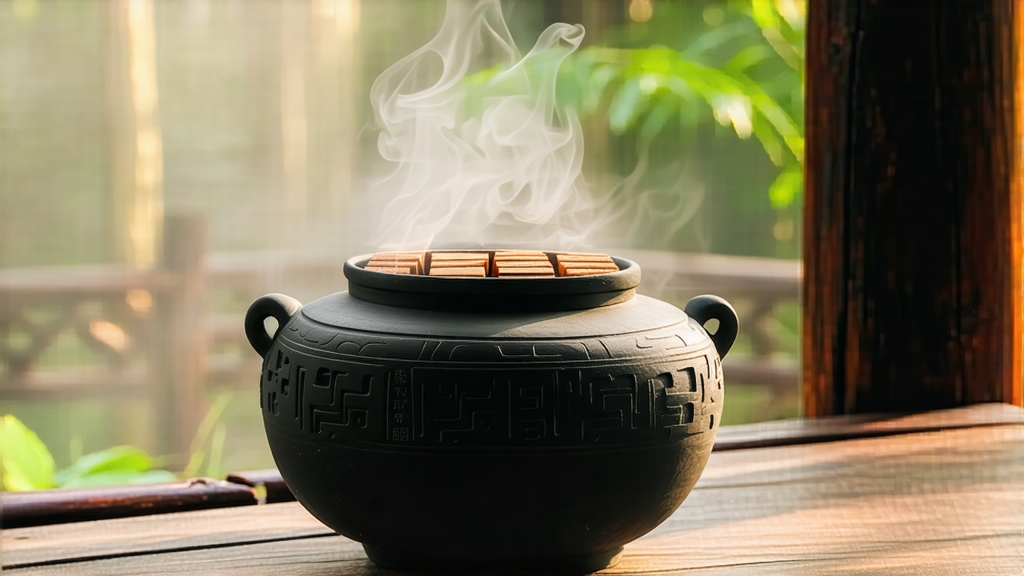
Tucked away in the subtropical mountains of southern China, Liu Bao (literally “Six Forts”) is the quietest celebrity of the dark-tea family. While Pu-erh grabs headlines, Liu Bao has spent four centuries perfecting the art of subtlety—an art that begins with geography and ends in a cup that tastes like liquid mahogany.
-
From Frontier Trade to Tea Voyager
During the Ming-Qing transition, Liu Bao village in Wuzhou prefecture served as the last tea stop on the “Ancient Tea Road” that fed the horse-and-barter markets of Central Asia. Compressed leaves traveled by bamboo raft down the Liu River, then by mule caravan across the Nanling range into Mongolia and Russia. The 40-day river journey exposed tea to constant humidity; merchants noticed the cargo arrived darker, smoother, and commanded higher prices. Thus, the first “post-fermented” Liu Bao was born not in a factory but on a boat. -
One Name, Three Faces
Modern Liu Bao is classified by both vintage and pile style:- Traditional Basket Pile (竹篓渥堆): leaves fermented 30–45 days in 30 kg bamboo baskets, yielding a clean, camphor note.
- Light Pile (轻发酵): 10–15 day fermentation preserves floral hints; preferred in Hong Kong dim-sum houses.
- Heavy Pile (重发酵): 60-plus days, 85 % humidity, 55 °C; produces deep cocoa flavors and a ruby-black liquor.
-
Crafting the Darkness
Harvest: One bud with third or fourth leaf, picked after Qingming when monsoon sap swells the stems.
Fixation: 280 °C wok roast for 3 minutes to arrest oxidation yet keep enzymes alive for later microbial action.
Rolling: A 25-minute “pine-needle twist” ruptures 60 % of cell walls without shredding the leaf, crucial for even colonization by Aspergillus niger and Blastobotrys adeninivorans.
Piling: The basket is lined with wild plantain leaves that inoculate the pile with native yeasts. Every 48 hours the tea master inserts a 2 m bamboo spear, pulls out a core sample, smells “sweet potato meets wet slate,” and decides whether to turn the pile.
Firing: After fermentation, leaves are sun-dried on raised bamboo racks inside camphor-wood sheds; the rising smoke carries terpenes that bond with tea polyphenols, creating Liu Bao’s signature cooling finish.
Compression: Finally the tea is steamed for 90 seconds, pressed into 500 g “brick-in-basket” forms, and wrapped in palm-leaf twine that allows micro-oxygenation for decades. -
The Living Warehouse
Unlike Pu-erh’s dry Yunnan climate, Wuzhou’s 78 % average humidity means Liu Bao never stops breathing. Connoisseurs store it in unfired clay jars called cang cha guan—“tea coffins”—buried halfway into the earth floor of a camphor forest hut. Over years, the tea swaps molecules with the tree roots, absorbing camphor and hints of wild orchid. A 1986 basket once auctioned in Kuala Lumpur carried a lab report showing 2.3 % borneol, the same compound that gives camphor its medicinal coolness. -
Brewing the Mountain Ghost
Water: 100 °C, but first pour over the kettle’s snout to drop 3 °C; Liu Bao dislikes violent bubbles.
Ratio: 5 g for 120 ml, or one square inch of brick per teacup.
Awakening: Flash rinse 3 seconds, discard; listen for the faint crackle as compressed cells rehydrate.
Stages:
1st–3rd infusions: 8–10 s, liquor the color of black cherry; taste is river stone and dried jujube.
4th–6th: 15 s, amber rim appears; notes of cacao husk and star anise.
7th–10th: 45 s, liquor turns rosewood; a cooling menthol trails down the throat, the “camphor echo.”
After the tenth, simmer the leaves in a clay kettle for 20 minutes to yield a midnight-black soup that tastes like burnt honey and ancient parchment. -
Tasting Ritual: The Four Whispers
Sight: Hold the cup against